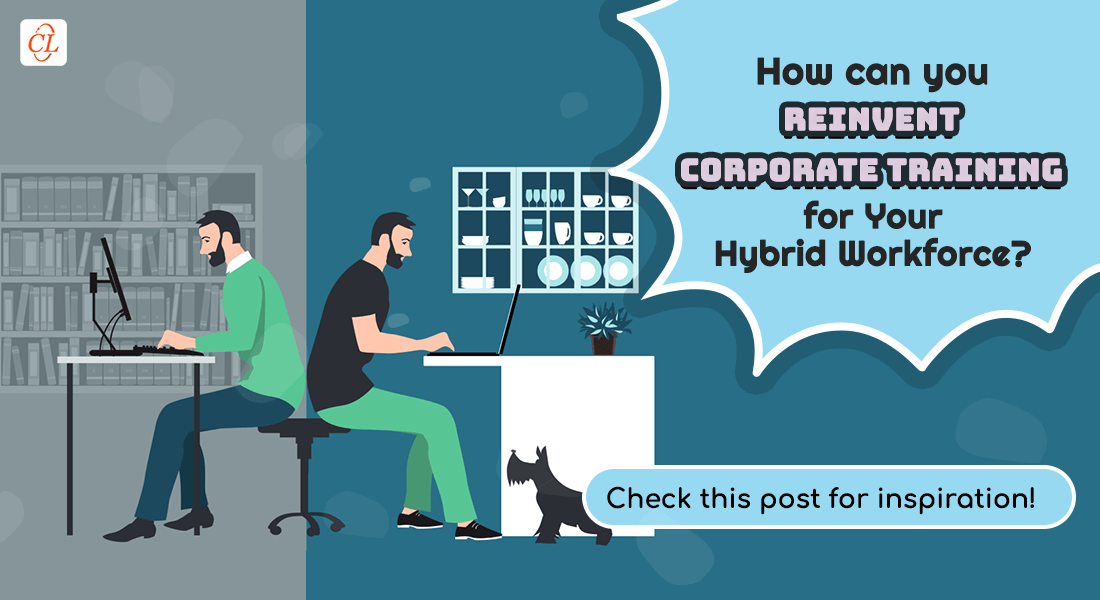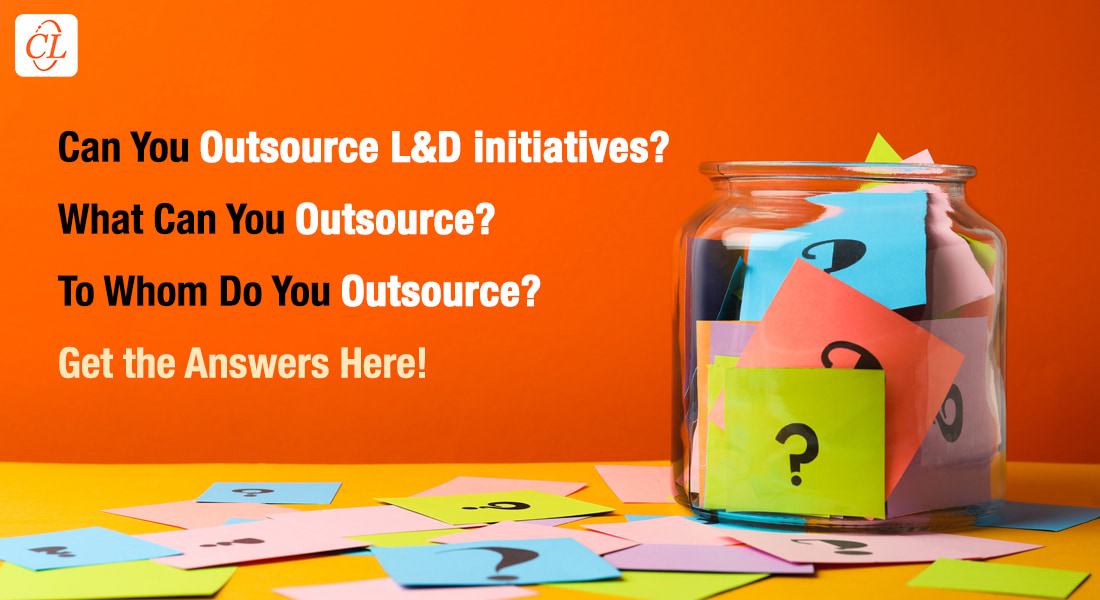How L&D Supports a Hybrid Workforce

Corporate training in the global workforce has transformed ever since COVID-19 began. The pandemic disrupted business as usual and gave rise to the remote work model. However, as things gradually returned to normal, a considerable chunk of the workforce started returning to office, giving rise to a hybrid paradigm that blended in-office and remote work environments. While this solves many problems for modern organizations, it puts L&D teams in a bind. They need to develop a corporate training strategy that will be suitable for the emerging hybrid workforce and ensure consistency in developing and imparting training programs.
In this post, we’ll talk about the role of learning and development teams and how they work towards supporting a hybrid workforce and creating dynamic remote and in-office employees.
Do You Want to Know How L&D Can Help in Upskilling Your Hybrid Workforce?
Here are a few ways. It can:
- Include Psychological Skills Training
- Conduct Technology and Cybersecurity Training
- Utilize Asynchronous and Synchronous Communication
Hybrid Teams – An Emerging Challenge in the Corporate Training Industry
Before diving into how L&D teams can support a hybrid workforce, we must go back in time to understand what has changed in recent times. Before 2020, corporate training mainly comprised of instructor-led classroom sessions, coaching, hands-on training, seminars, and even informal sessions centered around culture, competencies, structures, and emerging technologies.
In pre-pandemic days, many companies pursued eLearning and virtual training strategies. However, L&D managers didn’t use these approaches much because of a lack of awareness and issues of acceptance. That has changed. For since the beginning of March 2020, when governments ordered city-wide lockdowns and office shutdowns L&D teams have faced the disruption of business and usual.
As the workforce slowly shifts to remote work models, so does corporate training. Things changed overnight. Previously underutilized training strategies became popular once more, including virtual instructor-led training, eLearning courses, and microlearning videos, to name a few.
L&D teams quickly equipped themselves with prominent authoring tools, such as Adobe Captivate and iSpring, as well as video conferencing software, such as Google Meet, Microsoft Teams, and Zoom Meetings.
Following the influx of hybrid workspaces, L&D teams met with an unsolved problem. For the most part, corporate training was conducted either in the office or remotely before the Covid pandemic hit. There was no in-between. But now, they needed to combine both in-office and remote training to support learners with fresh content and fluid execution.
To say that this is a daunting task would be an understatement. Nevertheless, the hybrid work model is transforming the learning and development industry. It’s prompting trainers to explore new avenues and try new tools, methods, and structures and build efficient and cost-effective hybrid training strategies.
→ Onboarding the millennial workforce? Here’s how eLearning Can Help!
How L&D Teams Support and Upskill a Hybrid Workforce
L&D teams need to develop a hybrid approach to training. They need to blend remote and in-person tools, methods, and strategies to support this dynamic hybrid workforce. However, before L&D teams can get to work and develop corporate training programs that upskill and reskill employees, they need to also prepare and facilitate learners for hybrid training proactively.
The pre-training period is crucial for L&D teams as it helps make certain that they equip their learners with the tools to access hybrid training programs and reap the benefits. This period of transition comprises of the following processes:
1. Include Psychological Skills Training
For most employees, a hybrid work model is an entirely new concept. As a result, before anything, L&D teams need to train their employees to be open to experiencing blended learning. They need to at least question their learners’ assumptions about what they can expect from this method of training.
This is where psychological counseling fosters harmony. It takes learners and causes them to be optimistic, trusting, secure, and confident towards blended learning in hybrid work models. L&D managers must neutralize any factor that are, keeping their learners from moving out of their comfort zones and help them adapt to changes in training.
For instance, many employees accustomed to self-paced learning fear that in-person sessions will disrupt their routines. Similarly, those who have never trained remotely may experience the shock of using technology, and this might instill in them a fear of failure.
Thus, trainers need to develop pre-training sessions to build psychological skills, such as emotional intelligence, time-management, interpersonal skills, leadership, perseverance, and mental health. L&D teams need to continue with their existing methods, whether they’re using in-person sessions, virtual training or eLearning courses.
Pre-training will help to smoothen the learning curve without disrupting training routines. Once your learners are mentally ready for the change, only then must you execute a hybrid training strategy.
2. Conduct Technology and Cybersecurity Training
While this won’t be necessary for remote teams, employees who haven’t worked remotely or undergone training remotely might experience a shock and have trouble troubleshooting technological, security issues.
Consequently, you need to create a quick digital literacy program to help your learners adapt to productive solutions, such as Microsoft 365, Slack, Zoom, Evernote, and Salesforce, for remote operations and communications. You must also provide your learners with basic cybersecurity training to monitor and eliminate threats to your data and keep it safe. You need to also share the best practices for a hybrid workforce. Develop a backup plan and include a portable hotspot, power bank, and cloud storage to help safeguard your training content and minimize or prevent tech failures.
3. Utilize Asynchronous and Synchronous Communication
One of the biggest differences between remote and in-office work models is the communication framework. With hybrid workspaces becoming increasingly prevalent, the most important job for L&D teams is to train employees to shift between synchronous, real-time, and asynchronous, near-real-time, communication effectively before delivering their training program.
Most employees grow accustomed to synchronous communication, however, mastering the art of asynchronous communication requires documentation. It’s a mandatory prerequisite that needs to be met before hybrid learners can enjoy the autonomy and agency of near-real-time training.
Asynchronous communication training involves helping employees:
- Choose the right format for communication whether its verbal, written, or video.
- Provide the required platforms for remote and in-office learning environments to ensure effective communication.
- Determine when to use asynchronous instead of synchronous communication, and vice versa.
The training process typically involves helping learners adapt to using online collaboration tools like Dropbox and Google Workspace and video-conferencing tools including Zoom, Teams, Meet, and Skype when training remotely. Similarly, synchronous communication training involves equipping teams with the tools and expertise to engage people instantly in remote or in-office workspaces.
Developing a Multi-Channel Hybrid Corporate Training Strategy
Now that you know how to prepare employees for blended learning, here’s how to develop a multi-channel hybrid corporate training strategy to upskill and reskill employees effectively:
1. Assess Your Training Needs
You first need to assess your training needs by conducting a skill gap analysis. You then need to understand your employees’ learning preferences and create a suitable and flexible hybrid training structure.
2. Rethink Your Blended Learning Strategy
Next, you need to assess your mix of self-paced and in-person learning and make the required changes to your training strategy. You need to be more strategic about when and how you conduct in-person training sessions, especially if your remote employees are still getting used to returning to the office. Similarly, those accustomed to traditional classrooms might feel overwhelmed adjusting to online learning.
Therefore, you need to establish a balanced schedule that includes synchronous and asynchronous learning to ease the transition into hybrid training. For example, you could start by regularly hosting one in-person session and continue with your ongoing VILT sessions. Or you could use microlearning videos and facilitate mobile learning.
This way, it won’t matter whether your learners are training from the office or their homes. They’ll be using their smartphones and devices in both circumstances.
3. Invest in the Right Content Distribution Methods
To support a hybrid learning workforce, you need a robust LMS (learning management system) for employees to access from their homes and the office. L&D teams should opt for web or cloud-based authoring tools like Articulate Rise, Adobe Captivate 360, and Elucidat to name a few. They help you create quick videos, presentations, simulations, and other engaging content along with real-time assessment tools, such as quizzes, assignments, and games.
A few tools like Lectora, iSpring Suite, and Adobe Captivate handle both face-to-face and self-paced learning, including 360 Learning, Sibme, Thinkific, and Tovuti, to name a few.
The Bottom Line
To get the best out of your hybrid teams, you need to have an agile and flexible hybrid training strategy to ensure you equip your employees with the tools, expertise, and psychological skills to meet your training ROI, productivity, and operational efficiency goals.
With a flexible L&D strategy, you can be proactive and help your teams adapt to and thrive in any workplace environment. If your employees are actively switching between remote and in-office workspaces, then you need to adjust your training strategy to ensure consistency in your training content and its communication. And eLearning can help you in this greatly as it will keep your learners engaged throughout their training. Download this eBook to jumpstart eLearning in your organization!





